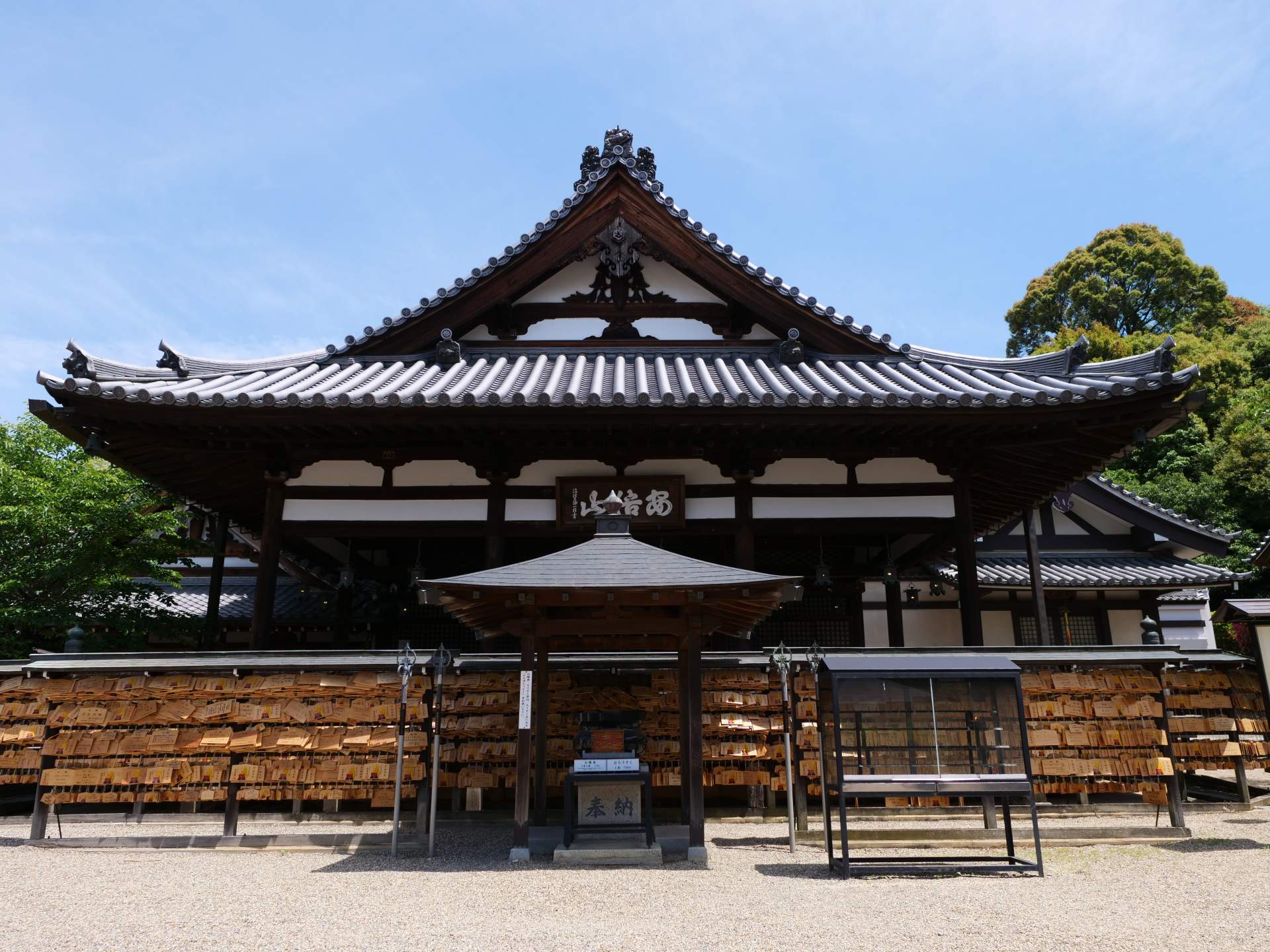參觀本堂前,寺方會準備抹茶和菓子,等享用完才能入內參拜,文殊菩薩佛像是國寶不能拍照的。

Verified [Verified] denotes information that has been published with confirmation of its owing parties.
Abe-Monjuin Temple
This is one of the oldest temples in Japan, founded by Abe-no-Kurahashimaro, who became the Minister of the Left during the Taika Reform. It is also well-known as the place where the famous onmyoji (leading specialist of Onmyodo), Abe-no-Seimei, conducted his astronomical observations.
It is one of the oldest temples in Japan. It was founded as the Abe clan’s temple by Abe-no-Kurahashimaro, who became the Minister of the Left during the Taika Reform in 645. It is also well-known as the birthplace of Abe-no-Nakamaro, the envoy to Tang China in the Nara period, and Abe-no-Seimei, the onmyoji in the Heian period.
The principal deity in the main hall is the Monju Bosatsu (the Buddha of Wisdom), which is famous for the proverb, “Three people make Monju’s wisdom” (two heads are better than one). Japan’s largest Bosatsu, at an imposing height of about 7 meters, is said to have been created by Kaikei, a genius Buddhist sculptor representing the Kamakura period. The “Tokai Monju and four Companions”, the Monju Bosatsu and the other four statues, are all National Treasures. Among them, the “Youth Zenzai Douji” is popular for its adorable appearance of a child joining hands, and it has become a popular topic among Buddhist statue fans.
The “Kinkaku Ukimi-do Hall,” which looks like it is floating on the pond, houses temple treasures related to Onmyoji as well as the statues of Abe-no-Nakamaro and Abe-no-Seimei. The cherry blossoms in the spring and the cosmos in the fall create a fantastic atmosphere around the halls.
The “Nishi-Kofun Mounds” is a National Special Historic Site, built in the Asuka period. It is said to be the tomb of Abe-no-Kurahashimaro and the interior is still in the same condition as when it was built in 645. It is said to be the most beautiful Kofun structure in Japan.
The store sells a variety of gourmet food as souvenirs, such as “Kame Pan” (turtle bread) filled with pumpkin paste and a medicinal fruit liquor, “Boke-shu,” for good health.
Highlights
-
It is an ancient temple established in 645 during the Taika Reform.
-
The principal deity, Monju Bosatsu (National Treasure), is the tallest in Japan at about 7 meters tall and looking very imposing.
-
The “Youth Zenzai Douji,” which stands beside Monju Bosatsu, is popular for its adorable appearance among Buddhist statue fans.
-
On the temple premises, there is a Kofun that has been preserved the same as it was in 645.
Photos
-
![The main hall]()
The main hall
-
![The “Kinkaku Ukimi-do Hall”, surrounded by cherry blossoms in the spring.]()
The “Kinkaku Ukimi-do Hall”, surrounded by cherry blossoms in the spring.
-
![National Special Historic Site “Nishi-Kofun Mounds”]()
National Special Historic Site “Nishi-Kofun Mounds”
-
![The statue of Abe-no-Seimei]()
The statue of Abe-no-Seimei
-
![The Abe Monjuin Temple’s specialty “Kame Pan”]()
The Abe Monjuin Temple’s specialty “Kame Pan”
-
![“Boke-shu”, a medicinal fruit liquor made from boke (Japanese quince).]()
“Boke-shu”, a medicinal fruit liquor made from boke (Japanese quince).
Reviews
-
甘露
Details
- Name in Japanese
- 安倍文殊院
- Postal Code
- 633-0054
- Address
- 645 Abe, Sakurai City, Nara
- Telephone
- 0744-43-0002
- Holiday
- Open every day
- Hours
- 9:00am-5:00pm
- Admission
- Middle school students and older 700 yen, Elementary school students 500 yen (including Green tea and sweets)
- Directions
- About a 7-minute bus ride from Sakurai Station on the Kintetsu Osaka line or JR Sakurai line.
- Credit Cards
- Not accepted
- Official Website
- Official Website (English)






